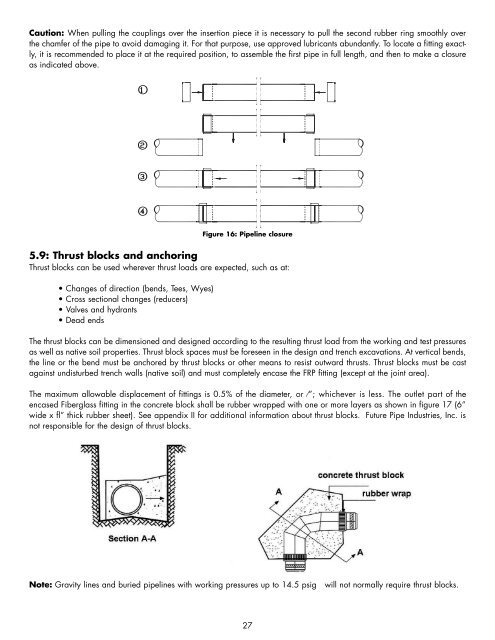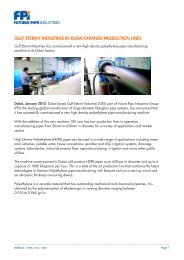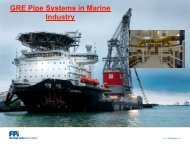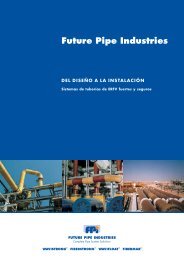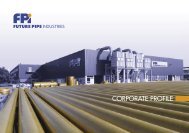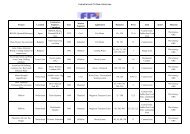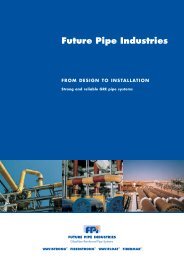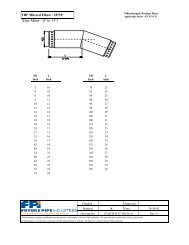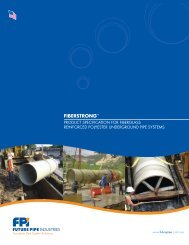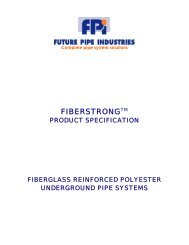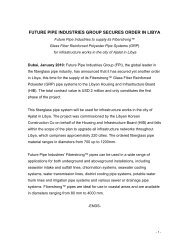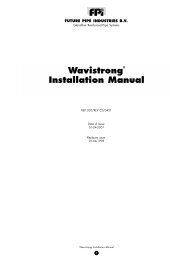Untitled - Future Pipe Industries
Untitled - Future Pipe Industries
Untitled - Future Pipe Industries
You also want an ePaper? Increase the reach of your titles
YUMPU automatically turns print PDFs into web optimized ePapers that Google loves.
Caution: When pulling the couplings over the insertion piece it is necessary to pull the second rubber ring smoothly over<br />
the chamfer of the pipe to avoid damaging it. For that purpose, use approved lubricants abundantly. To locate a fitting exactly,<br />
it is recommended to place it at the required position, to assemble the first pipe in full length, and then to make a closure<br />
as indicated above.<br />
Figure 16: <strong>Pipe</strong>line closure<br />
5.9: Thrust blocks and anchoring<br />
Thrust blocks can be used wherever thrust loads are expected, such as at:<br />
• Changes of direction (bends, Tees, Wyes)<br />
• Cross sectional changes (reducers)<br />
• Valves and hydrants<br />
• Dead ends<br />
The thrust blocks can be dimensioned and designed according to the resulting thrust load from the working and test pressures<br />
as well as native soil properties. Thrust block spaces must be foreseen in the design and trench excavations. At vertical bends,<br />
the line or the bend must be anchored by thrust blocks or other means to resist outward thrusts. Thrust blocks must be cast<br />
against undisturbed trench walls (native soil) and must completely encase the FRP fitting (except at the joint area).<br />
The maximum allowable displacement of fittings is 0.5% of the diameter, or ⁄”; whichever is less. The outlet part of the<br />
encased Fiberglass fitting in the concrete block shall be rubber wrapped with one or more layers as shown in figure 17 (6”<br />
wide x fl” thick rubber sheet). See appendix II for additional information about thrust blocks. <strong>Future</strong> <strong>Pipe</strong> <strong>Industries</strong>, Inc. is<br />
not responsible for the design of thrust blocks.<br />
Note: Gravity lines and buried pipelines with working pressures up to 14.5 psig will not normally require thrust blocks.<br />
27


